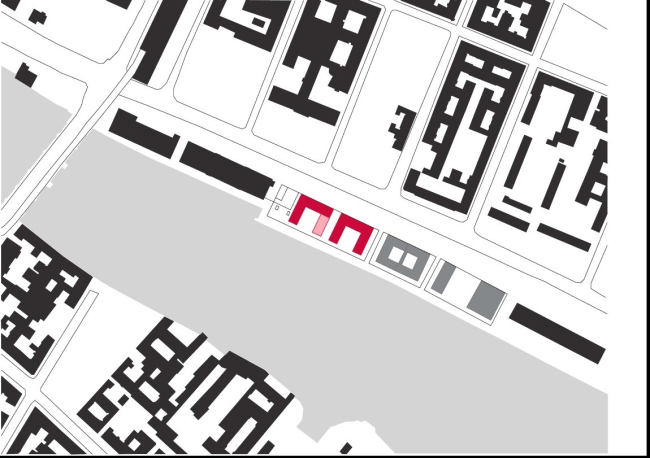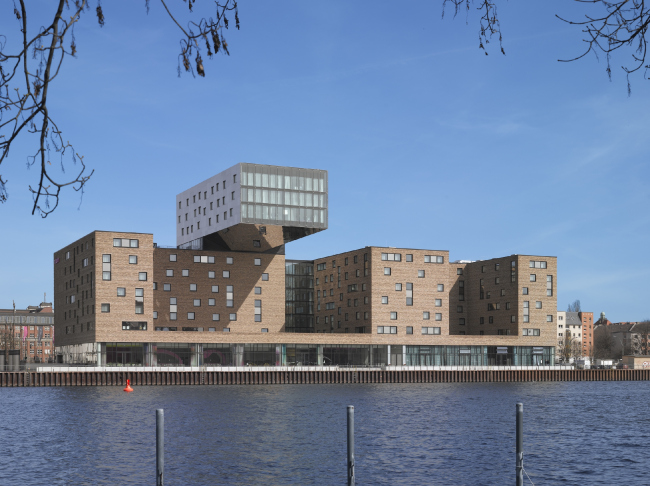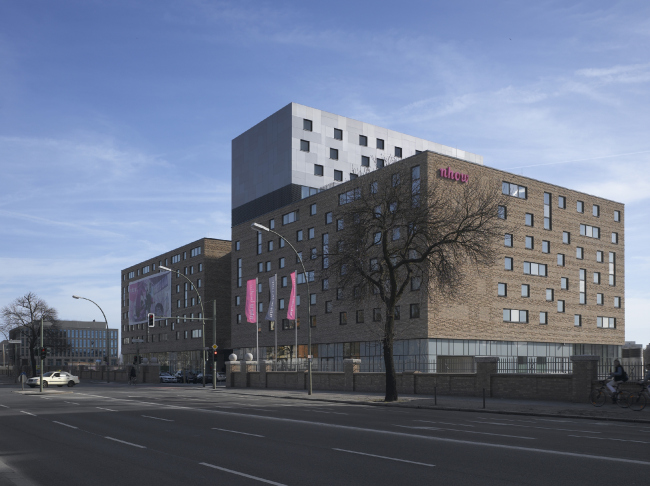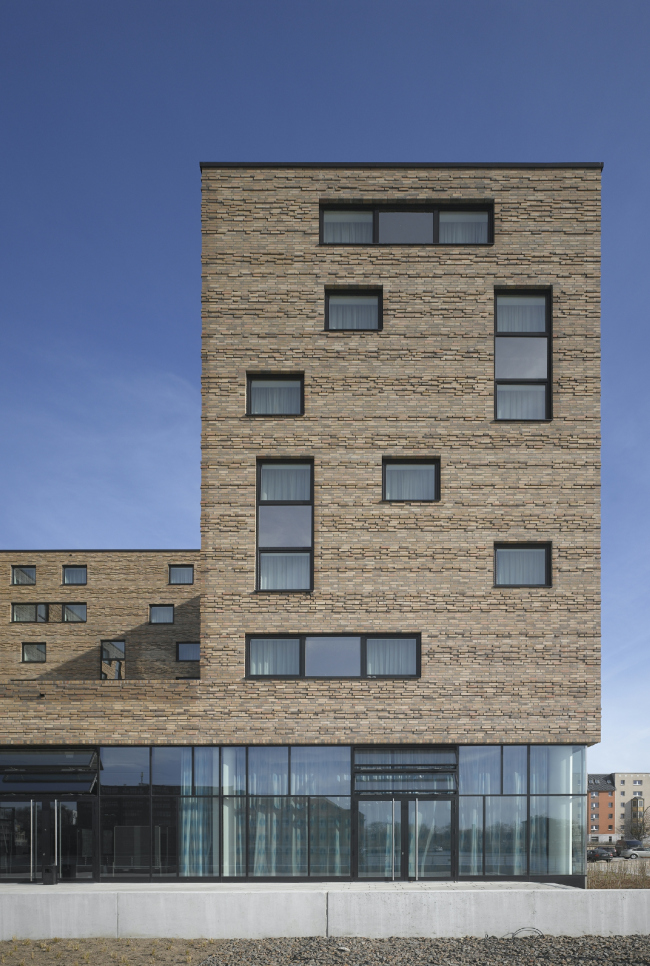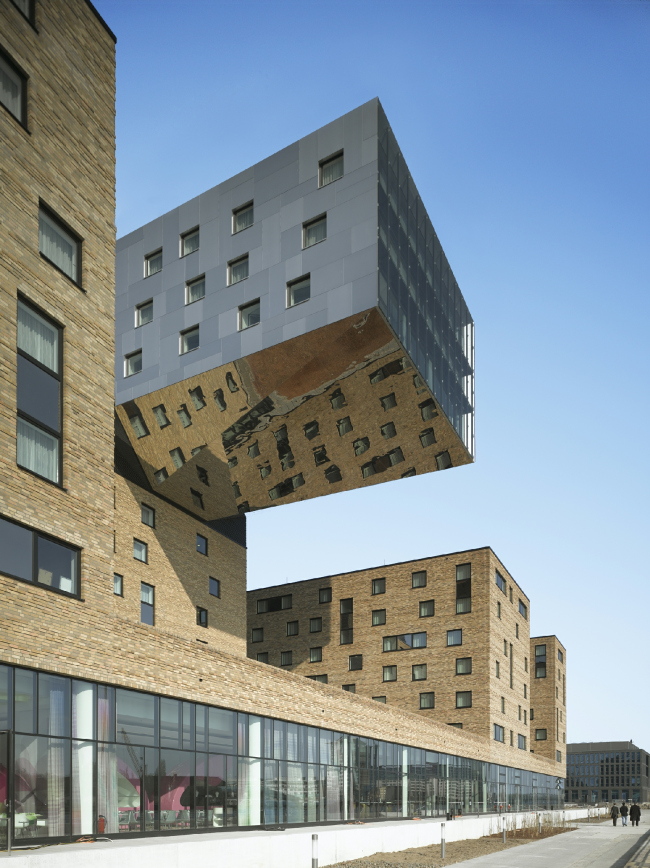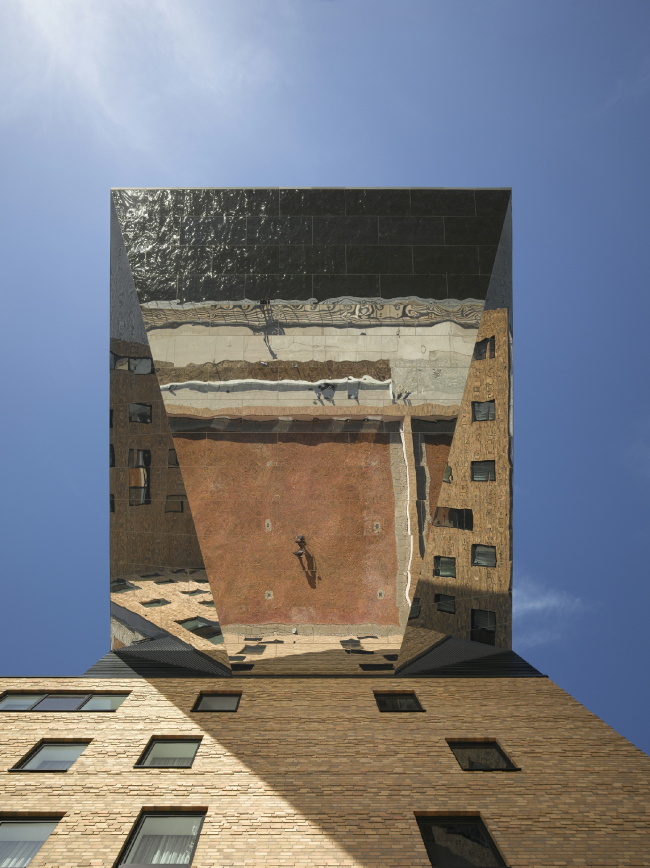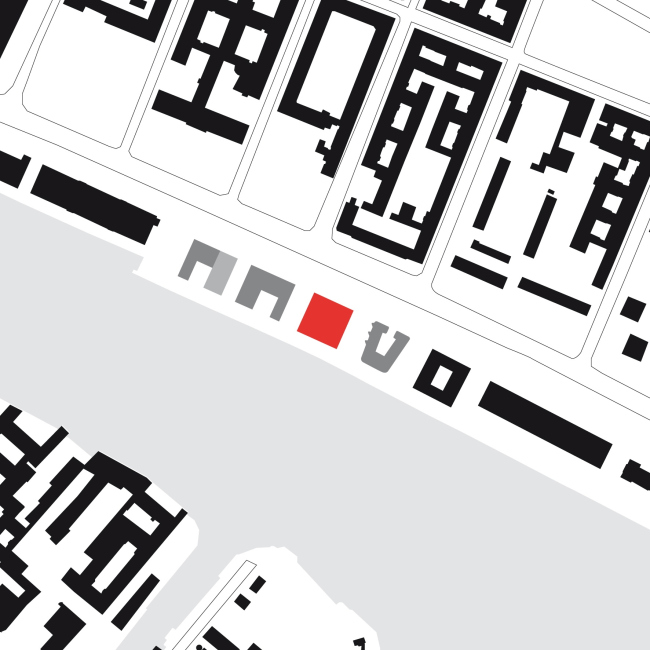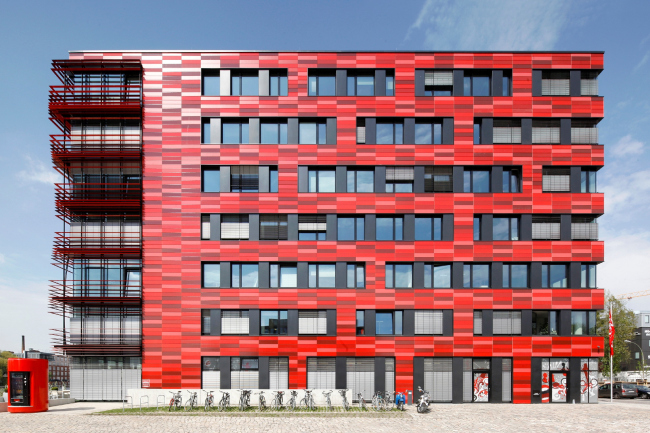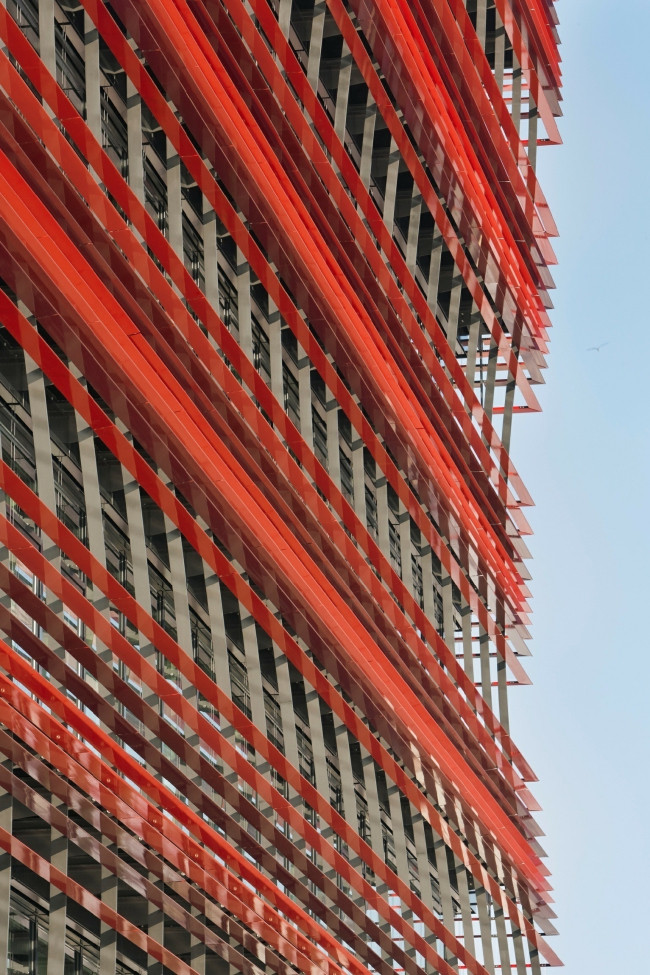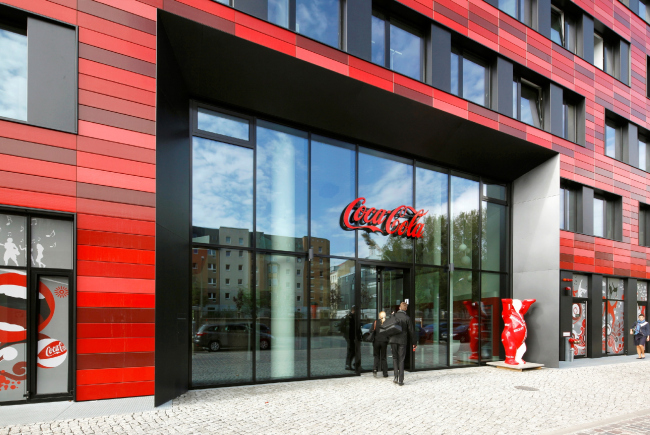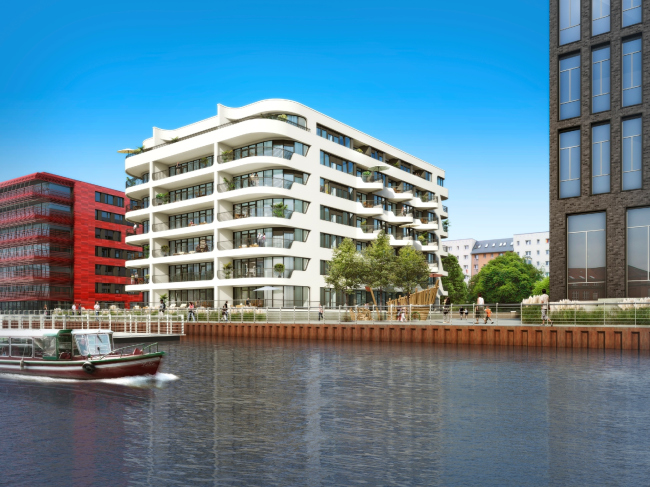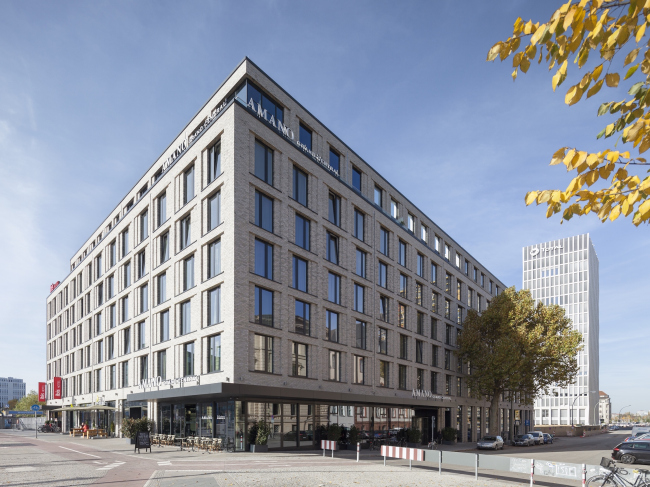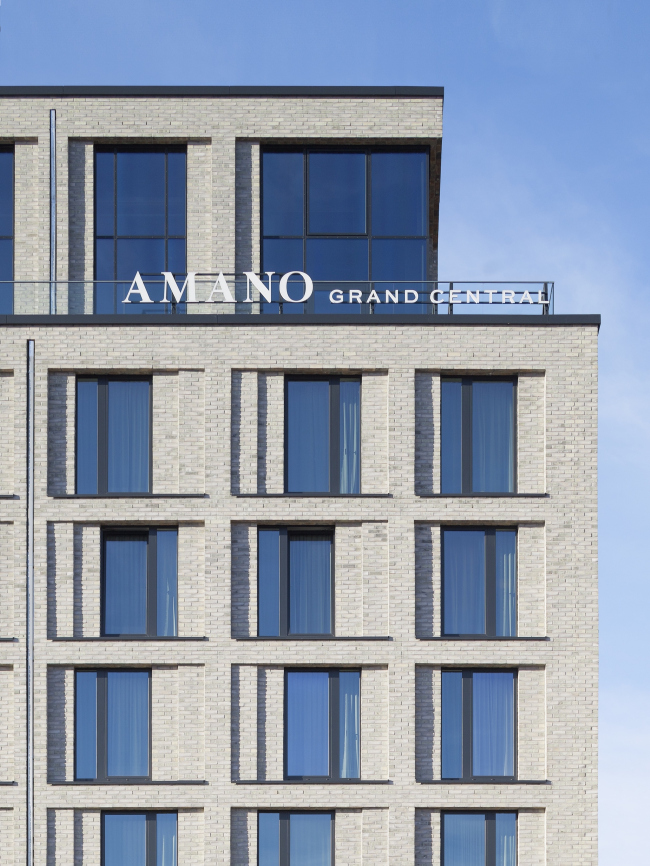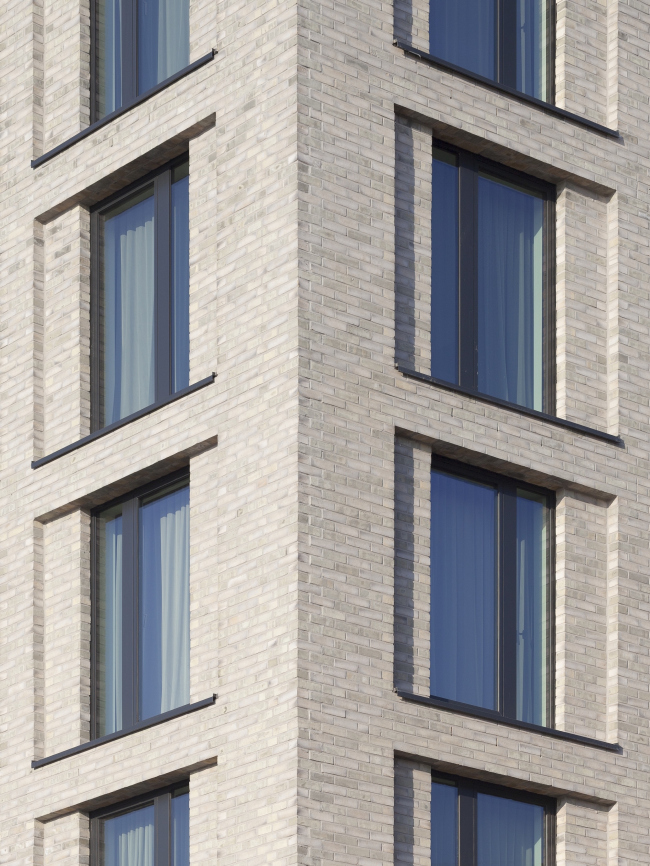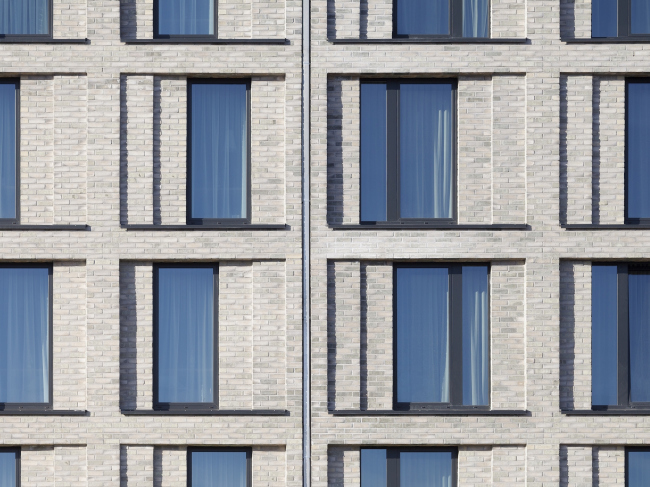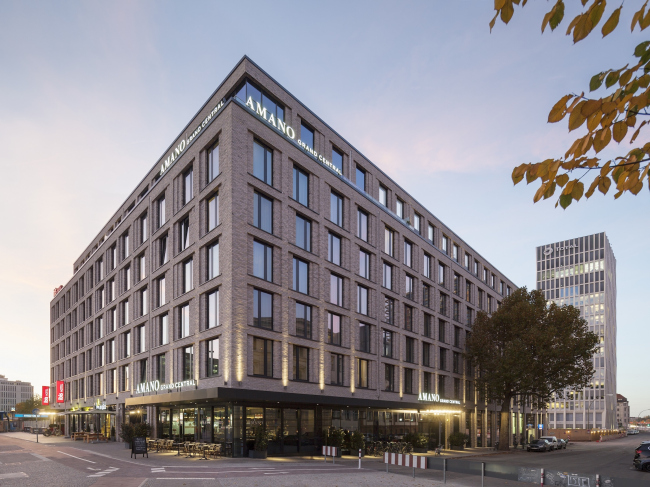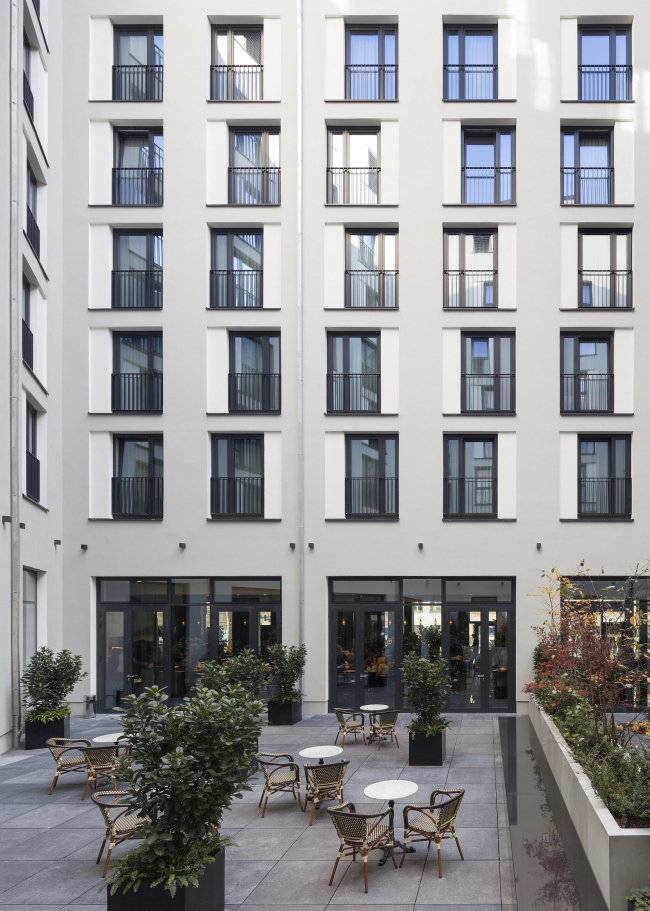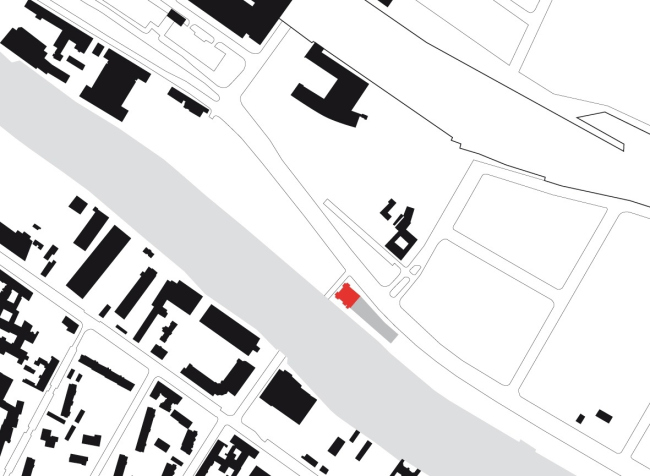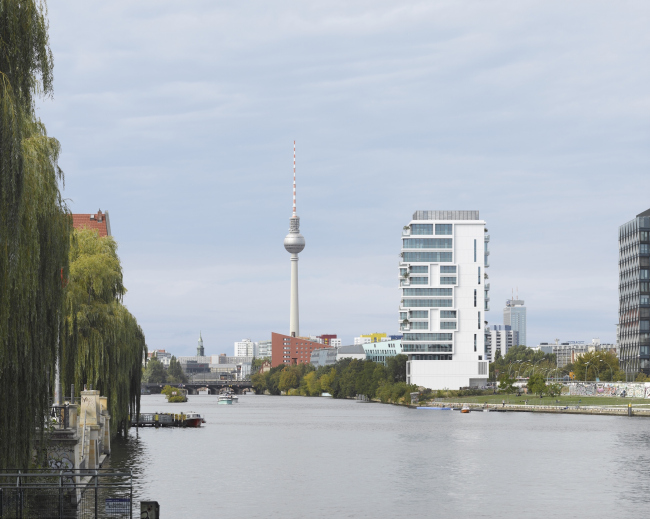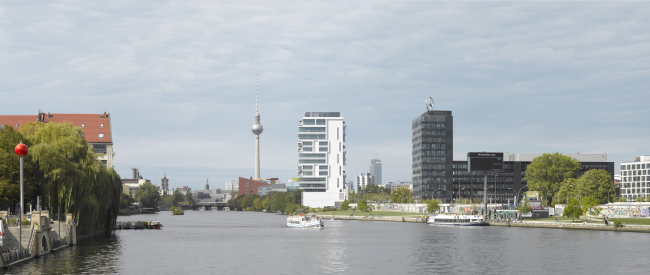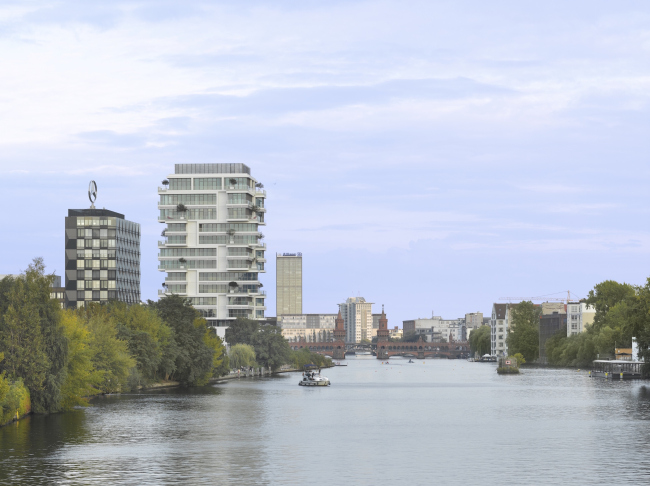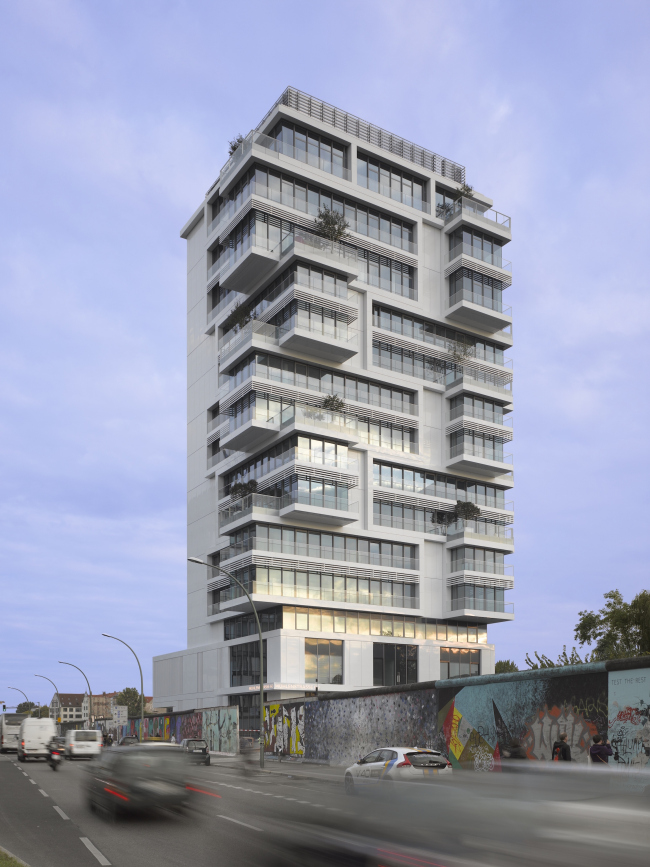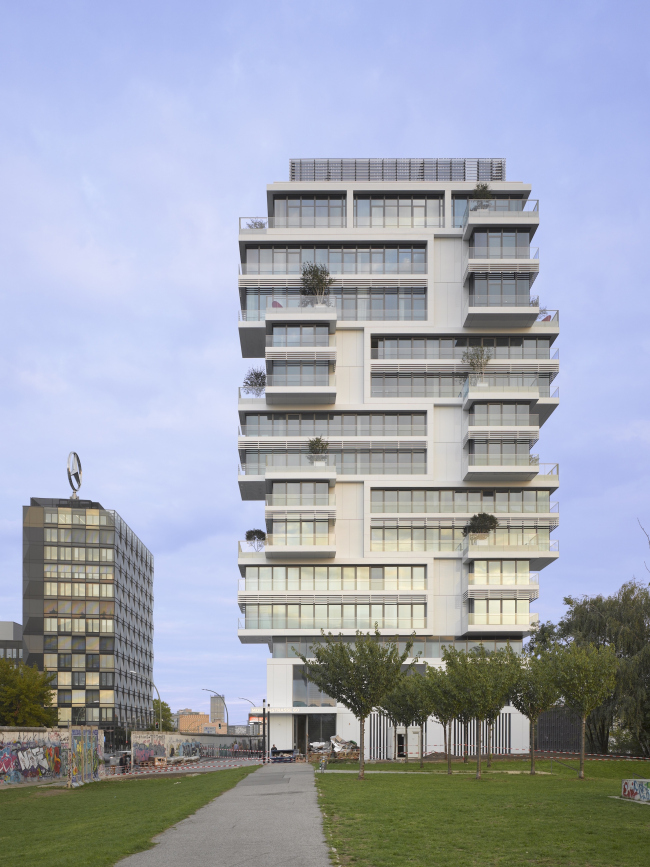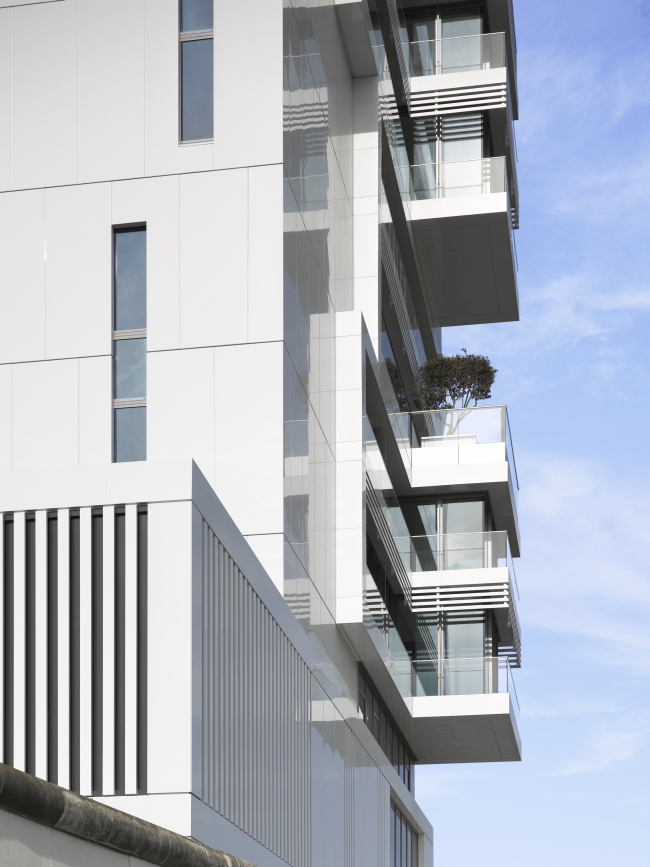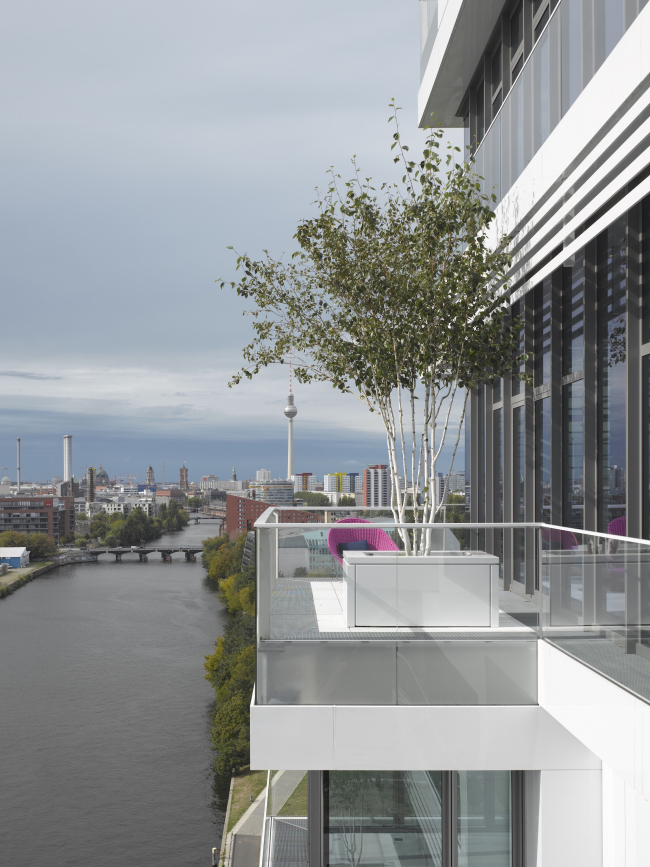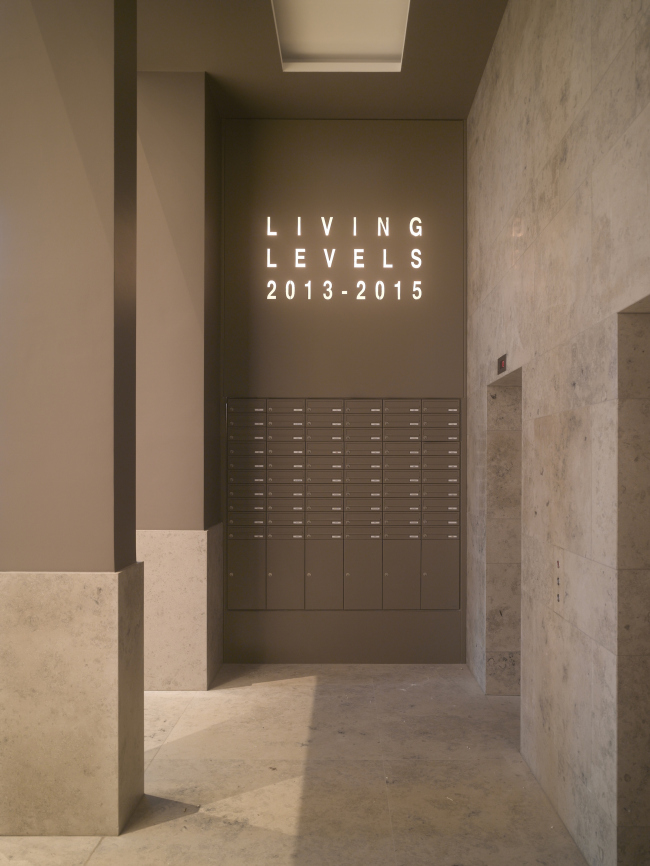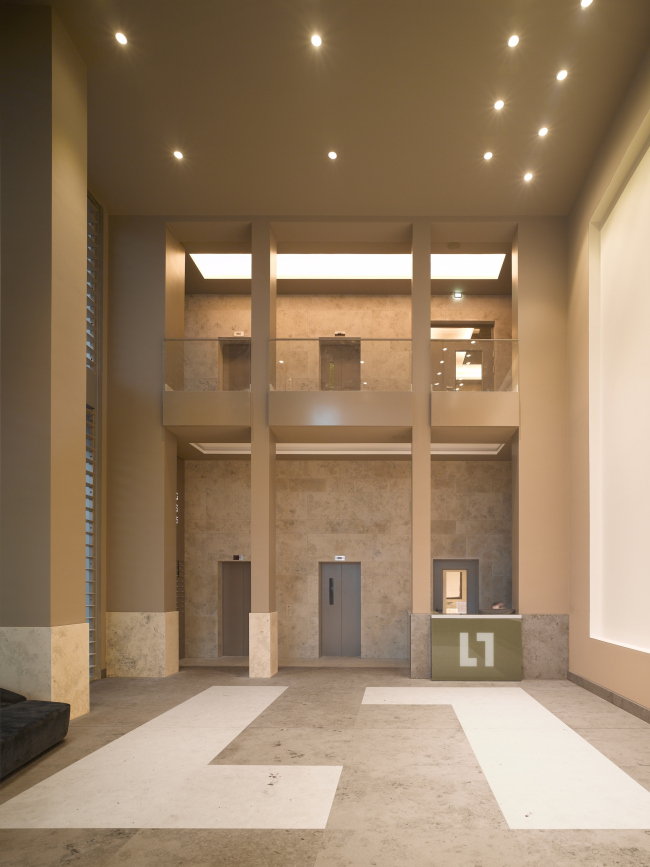|
Published on Archi.ru (https://archi.ru) |
|
| 20.11.2015 | |
|
Town Planning Responsibility |
|
|
Tatiana Timofeeva |
|
| Architect: | |
| Sergei Tchoban | |
| Studio: | |
| Tchoban Voss Architekten | |
|
Exclusively for Archi.ru, Sergey Tchoban made a guided tour of his new projects built in Berlin. Our first stop is the area of East Haven or "Osthafen" as it is called in Germany's capital. This former dock area, unlike its Westhafen brother, never had a closed water area but was in fact a giant moor that stretched for a kilometer and a half down the river along which warehouses and grain depots still stand. It was these particular buildings that the city decided to breathe a new life into back in the 2000's by initiating here a creation of cultural and media cluster that got a self-explanatory name of Media-Spree. A contest for the best master plan was organized - and nps tchoban voss won it in 2003. nhow Hotel © nps tchoban voss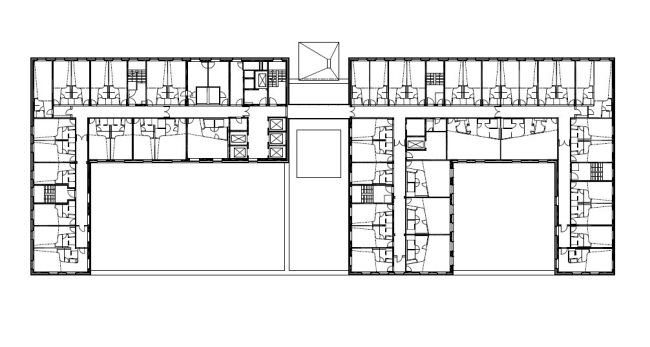 nhow Hotel © nps tchoban vossnhow Hotel. Photo © Roland Halbenhow Hotel. Photo © Roland Halbenhow Hotel. Photo © Roland Halbenhow Hotel. Photo © Roland Halbenhow Hotel. Photo © Roland HalbeFour years later, on the neighboring site, nps tchoban voss built an office building that later on became the HQ of Coca-Cola Company. Yes, this IS the rare occasion when it was not a project that was designed specifically for such a large company but it was the company that chose the building that turned out to be exactly in the company's spirit. "Just as in the case with the hotel, the design code here was about working with the terra-cotta tones that are pretty much a standard for the entire territory of the former port but this time around, instead of using the bricks, we decided to "retell" their story in a contemporary way" - Sergey Tchoban explains. For the facade decoration, the architect used rectangular panels of five different shades of red, from faded pink to dark crimson, some of the panels glossy, some opaque - which gave the surface a look both bright and textured. Such "pixelated" facades are turned to the streets and the side driveways, while the river is commanded by panoramic windows. And, because this is the south side, on top of the glass the architects placed stationary blinds of the same shades of red: the slender horizontal lamellae make the color literally stream alongside the facade, the effect being manifold enhanced by the slightly concave form of the sun-shielding elements. Terminally simple in its shape, this building, specifically thanks to its memorable "clothes", turned into a recognizable color accent of the renewed Osthafen. And it, indeed, matches the corporate colors of Coca-Cola so perfectly that all the company had left to do was place its bright red logo above the main entrance. Coca-Cola HQ © nps tchoban vossCoca-Cola HQ. Photo © Claus GraubnerCoca-Cola HQ. Photo © Claus GraubnerCoca-Cola HQ. Photo © Claus GraubnerCoca-Cola HQ. Photo © Claus GraubnerCoca-Cola HQ © nps tchoban vossAnd, finally, still a little further down the embankment, nps tchoban voss is building a residential complex named "White Cube". As one can figure out from the name of the project, in this particular case, the architects stepped away from the color code that they had once proposed. "By using a different color, we wanted, first of all, to highlight the residential function - new for Osthafen" - Sergey Tchoban says. This "new" color is dazzling white - to make it "sound", one does not need a textured surface, and in this case the architects only work with form alone, giving to it more active and willful plastics than its neighbors have. On the plan, this residential complex has a trapeze shape all corners of which are slightly rounded. Just as rounded will be the balconies, the project having three types of them: on the side that faces the river, the apartments will get imposing open-air terraces; on the opposite side - meaning, facing the street - there are cute little corner balconies; and, as for the side facades, they are adorned by the triangular "captain's bridges" that stand out just as much as to give the people an opportunity to catch a glimpse of the water area. On each of the floors, there are three such balconies, and, lined up, thanks to their elongated and at the same time rounded shape they remind a foamy crest of the wave - entering into an active dialogue not only with the surrounding buildings but with the Spree as well. White Cube residential complex. Location plan © nps tchoban vossWhite Cube residential complex © nps tchoban vossWhite Cube residential complex © nps tchoban vossWhite Cube residential complex © nps tchoban vossWhite Cube residential complex © nps tchoban voss***
Hotel next to the Central Station Our next stop is Berlin Central Station. In its immediate vicinity, there is a construction site where Sergey's Berlin office is finishing the construction of a large hotel complex that will be run by two operators at once - the more "budget" Ibis and the more "deluxe" Amano. "This land site has behind it a very long professional discussion that went on in the city: the scale of the station itself, its style, just as the architecture of the government buildings on the opposite bank of the Spree, seemingly, were the prerequisites for the appearance of quite different, just as conspicuous, objects. However, in actuality, on the land sites that surround Hauptbahnhof, nothing was happening - shares the architect - Finally, Berlin's chief architect Regula Luesche announced several construction contests at once for the land sites, one of which was to bear a hotel". Nps tchoban voss won this contest by proposing a solution that was both stylish and graceful. Amano and Ibis hotels next to Berlin Central Station. Photograph © Martin TervoortAmano and Ibis hotels next to Berlin Central Station. Photograph © Martin TervoortAmano and Ibis hotels next to Berlin Central Station. Photograph © Martin TervoortThe complex that will exist in the body of a giant construction of glass and steel was initially designed as a project that would be, on the one hand, terminally material, and, on the other hand, ostentatiously environmental. Its facade is made of bricks whose color palette varies within a range of gray, greenish, and ochre tones, thanks to which from a distance the brickwork looks like maybe like a roughly curried hide. The textured look is enhanced by the stone blinds that the authors invented: the architects accentuate every window aperture with the help of special vertical inserts approximately the size of the window itself. Interesting is the fact that on one of the sides there are two such inserts, one of them sunken in, the other, conversely, standing out - which creates for the glass a seemingly simple but still a multidimensional framework. And, thanks to the fact that the architects are constantly changing the arrangement of the double inserts, the windows are moving over the facade, picking up and developing on the macro-level the theme of light and dark bricks alternating in the brickwork. Amano and Ibis hotels next to Berlin Central Station. Photograph © Martin TervoortAmano and Ibis hotels next to Berlin Central Station. Photograph © Martin TervoortThe place where the two hotels come together is shown by the broken line of the roof and the joint of light-colored concrete. What is interesting is the fact that this detail was originally there in the project submitted for the contest but the customer decided not to implement it. And the company made a rash step investing its own money in order to implement the building the way it was originally designed and approved. "This, if you want to put it this way, is what our responsibility before this city is all about - we must implement the project the way the city chose and approved it. Besides, when you work with architecture that has few details about it, the level of execution of each of these few details must be paid utmost attention, otherwise you're running a great risk of falling into facelessness and creating a surface that simply has nothing on it to catch the eye" - says Sergey Tchoban, deeply convinced that it is the ability to make high-quality environmental buildings that defines the professionalism and, ultimately, the success of the modern architect. Amano and Ibis hotels next to Berlin Central Station. Photograph © Martin TervoortAmano and Ibis hotels next to Berlin Central Station. Photograph © Martin TervoortAmano and Ibis hotels next to Berlin Central Station. Photograph © Martin TervoortWhite tower on the Spree River Making a round of the city, we get back to East Haven - only approach it from a different direction this time. The buildings that we have already examined are soon left behind, and the perspective of Muelenstrasse is completed by the famous Berlin TV tower with a sphere above the spear. In the area of just as famous East Side Gallery, this view is flanked by two high-rises - Mercedes HQ and the residential complex "Living Levels" the construction of which has just been completed. It is this complex that is our last stop for today. Residential building "Living Levels" – East Side Tower © nps tchoban vossResidential building "Living Levels" – East Side Tower. Photo © Roland HalbeThe 14-story tower stand on the Spree's bank, only separated from the water by a landscaped embankment. Advantageous in all respects, this land site was once part of a large-scale master plan on the development of the embankment in the proximity of the Berlin Wall, this plan providing for the construction of several high-rises. Later on, the city reconsidered the height regulations and lowered the maximum allowed height but by that moment one centerpiece was already approved, and Berlin has not known a single case when the already issued construction permits would be revoked. But then again, the appearance of a high-rise with a dramatic silhouette in this place did not cause anybody any doubts - after the tower of "Mercedes" automotive giant was built here by Gewers & Pudewill, the panorama of this area was literally asking for another vertical to offset it. In a sense, the color of the second high-rise was also predetermined: the "automobile" tower was executed from black glass, and adding yet another black centerpiece would mean blacking out the area's whole color palette. The perfect solution was found in metallic panels painted white - the snow-white gloss not only makes the building look neat but also quite unambiguously points to the highest class of the housing offered here. Residential building "Living Levels" – East Side Tower. Photo © Roland HalbeResidential building "Living Levels" – East Side Tower. Photo © Roland HalbeResidential building "Living Levels" – East Side Tower. Photo © Roland HalbeAnd, indeed, the housing in Living Levels meets the highest standards and makes the most out of its location: each apartment here is oriented to at least two cardinal points. Actually, it was the architects' desire to provide the people with as many as possible interesting views from their windows that to a large extent defined the architectural and engineering solution of the high-rise. All the apartments are situated along the outside perimeter of the residential floor and are glazed as much as possible but that's not all - each apartment is "pulled out" from the main volume, getting, at the expense of the cantilevers, extra viewing perspectives. The cantilevers (out of structural reasons and in order to avoid visually fracturing the facade too much, the architects joined the apartments into two-story blocks) appear on all the three facades that have a visual contact with the water area, and these multiple "little shifts" form, in fact, the tectonics of the building. It looks like a firewood stack whose rhythmic order is enhanced with the help of the horizontals of the intermediate floors and the blind vertical inserts that visually separate the blocks from one another. What is remarkable is the fact that the corner on the side of Muelenstrasse is fully coated with metal but the key "shifting" theme is to be read here as well: the narrow verticals of the staircase block are also positioned on the facade with a slight shift in respect to one another, while the cantilevers are perfectly readable "in profile" thus giving the snow-white tower an elegantly exquisite but at the same time dynamic silhouette. Residential building "Living Levels" – East Side Tower. Photo © Roland HalbeResidential building "Living Levels" – East Side Tower. Photo © Roland HalbeResidential building "Living Levels" – East Side Tower. Photo © Roland HalbeResidential building "Living Levels" – East Side Tower. Photo © Roland HalbeResidential building "Living Levels" – East Side Tower. Photo © Roland HalbeResidential building "Living Levels" – East Side Tower. Photo © Roland HalbeResidential building "Living Levels" – East Side Tower. Photo © Roland HalbeResidential building "Living Levels" – East Side Tower. Photo © Roland HalbeResidential building "Living Levels" – East Side Tower. Photo © Roland Halbe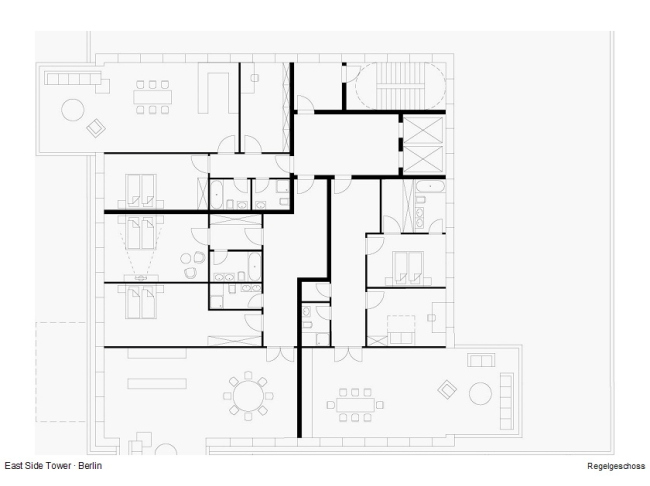 Residential building "Living Levels" – East Side Tower © nps tchoban voss |
|
